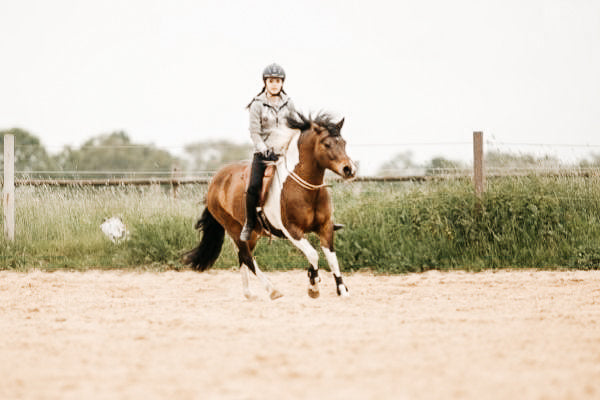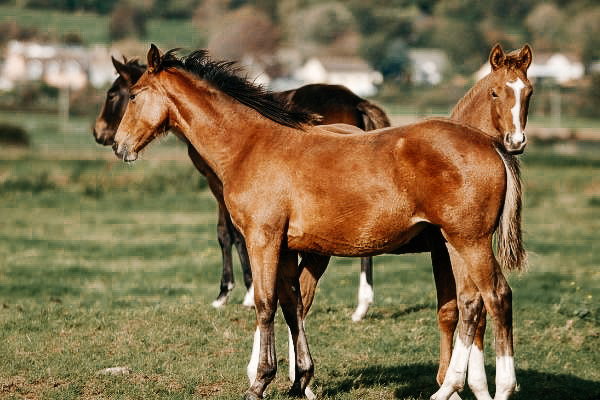
Saddle pressure in horses – recognize, treat and prevent early!
The saddle has made riding so easy for us humans and yet it is precisely this saddle that can cause considerable problems for many horses. No matter what style of riding - some horse saddles just don't fit like a glove. With bad consequences for the relationship between horse and rider and, of course, primarily for the health of the animal. Good advice is expensive here, because a horse's leather needs over the course of its life should firstly fit and secondly fit.
The fact is, not every tack is right for every horse. We don't want to withhold from you what can happen if the horse's back has to put up with a model that is not ideal. And there are actually more reasons for saddle pressure that will certainly interest you.
What is that exactly and what are the causes?
Saddle pressure on a horse refers to the pressure points that can arise if the saddle does not fit. The cause can also be a saddle cover that is not placed correctly or has slipped. Even a heavy, poorly seated rider could experience increased pressure on the horse's saddle or saddle. put on the horse.
All of these then cause bruising in the area of the saddle and the withers. Even building defects, clearly missing muscles, an unfavorable strap position, a dirty saddle cloth, an insufficiently cleaned saddle position, the physical change from remonte to adult horse or too little surface area for the rider and their luggage (trail riding) are possible stimulants.
Areas that have relatively little muscle, such as the withers or the spine, are usually affected. However, pressure points can also occur on the back. The hair often grows back white (sting hair) in the compressed areas because the pressure damages the pigmentation of the skin. This prickly hair stays. The pigmentation damage is irreparable.
It is also worth mentioning that a belt that is too loose or too tight can also cause saddle pressure in the belt position. So it's not necessarily just the horse's back that is involved.
Symptoms of saddle pressure in horses
In the early stages:
- roughened, dull or broken fur
- no consistent sweat pattern after training
- Restlessness when saddling or re-girthing
- Adhesion of the fur
In advanced stages:
- clear signs of discomfort from the horse such as: b Snapping possible when saddling and grooming
- dented or swollen skin
- possibly. Problems while riding e.g. b stiff posture, pushed back, restlessness, tail flicking or even humping
- inflamed areas with weeping skin and/or pus
Treatment
Important:
The horse must now be protected! No riding, no saddle, no harnesses etc. until the saddle pressure has completely healed.
Swollen skin benefits from prompt cooling with water and/or an acetate mixture. Mild ointments that promote wound healing can help protect the affected tissue. Dexpanthenol, calendula or arnica ointments are well suited. However, these should not be applied to open wounds!
It is prudent to have a veterinarian look at the sore area. He can quickly initiate the right treatment in the form of a suitable medication if inflammatory processes are already occurring. In the worst case, a secondary infection occurs through the wound and must be treated quickly with antibiotics to protect deeper tissue, bones and ligaments.
Possible muscle tension that is caused by saddle pressure in the horse should also receive additional therapy (e.g. b Osteopathy, acupuncture etc.) The addition of homeopathic remedies can be a good support during this time. This regenerates the horse's organism from the inside out.
If it's on the horse's saddle
If the vet confirms that the tack does not currently fit well, the saddler should come by to take a look and adjust the material if necessary. However, if the whole thing is no longer suitable for the horse at all, you really need to think about new equipment. A knowledgeable saddler can take measurements of the horse in advance so that the new one fits neatly and fits the animal. He can also provide advice, which is equally useful for rider and horse.
Important:
Here too, wait until complete healing has been achieved. Otherwise measurements may vary due to swelling.
How you can prevent saddle pressure on your horse
- Clean the saddle area well (paddock sand and mud scrubs)
- Take your time when saddling (correct position, place the blanket without wrinkles, no quick strapping)
- do not strap too loosely/tightly
- always make sure the surface is clean
- an anatomical cut of the saddle pad is advantageous
- Blanket/pad must fit the size of the riding saddle
- Replace belts if necessary (high wear)
- Thoroughly question the animal's unwillingness when saddling or riding
- Regular checks by a saddler or expert to ensure that the horse saddle still fits the horse's back
- Don't neglect muscle building training
- Use the climbing aid to prevent the saddle from slipping
- work on yourself (posture, giving gentle help, etc.) in order to continue to be a pleasant leisure partner for the horse
Clear conclusion
You just read it yourself. There are actually many ways to effectively prevent saddle pressure in horses. If you pay attention to these, this will certainly not be an issue for you and your sweetheart in the future. What does it say?
Caution doesn't hurt.
Discover more posts

Lewitzer – colorful and people-oriented leisure partners
Noble head, great check and a character that really shows strength. The little Lewitz pony proves more than ever that even a small horse can be relied upon. As beautifully diverse as their app...
Continue reading
Tips for training young horses – a good start in life counts!
Nowhere are more foundations set for a horse's future path than in young horse training. Encouraging the “young wild ones” in their spirit right from the start is a special focus in equestrian...
Continue reading
